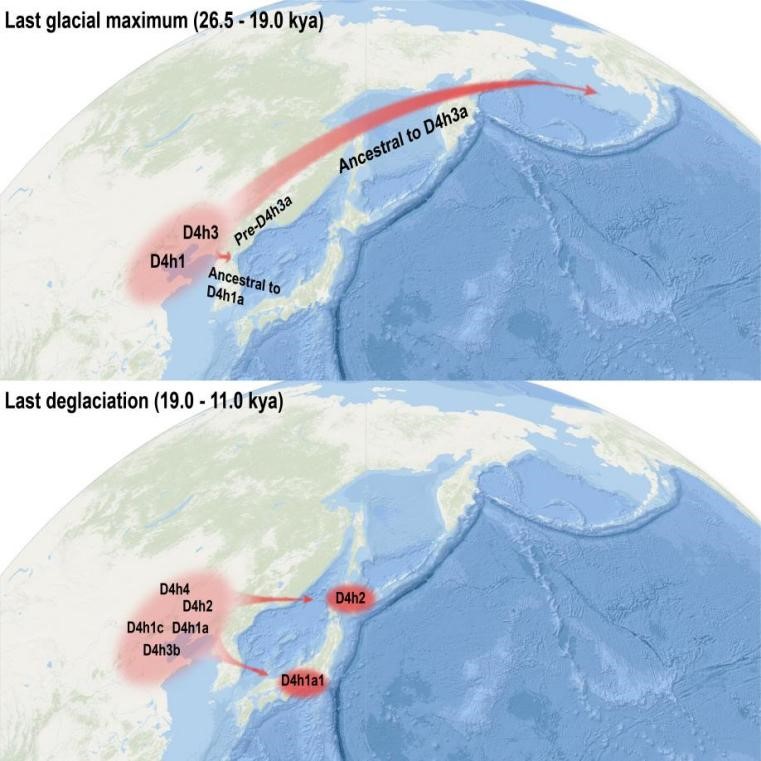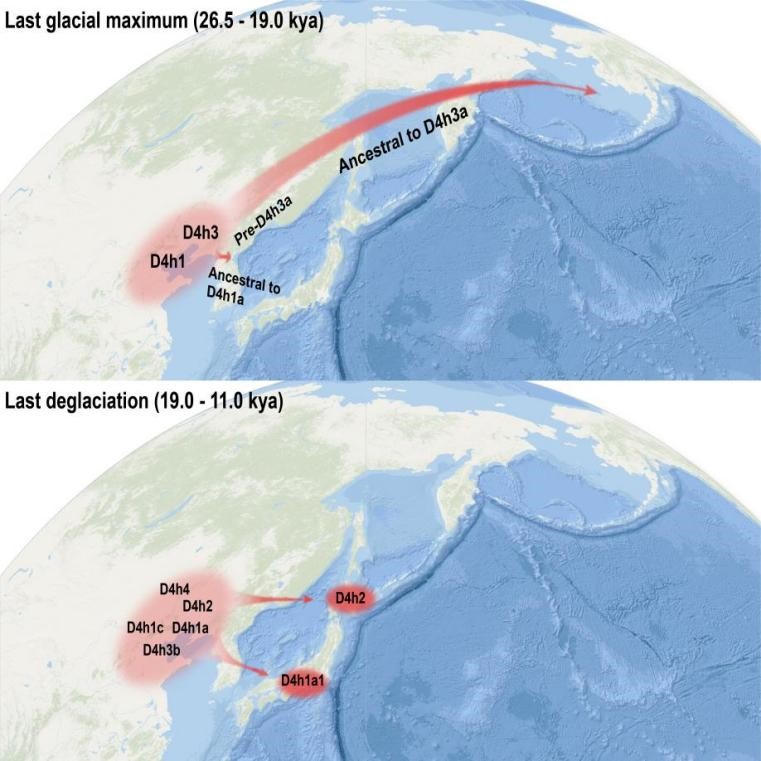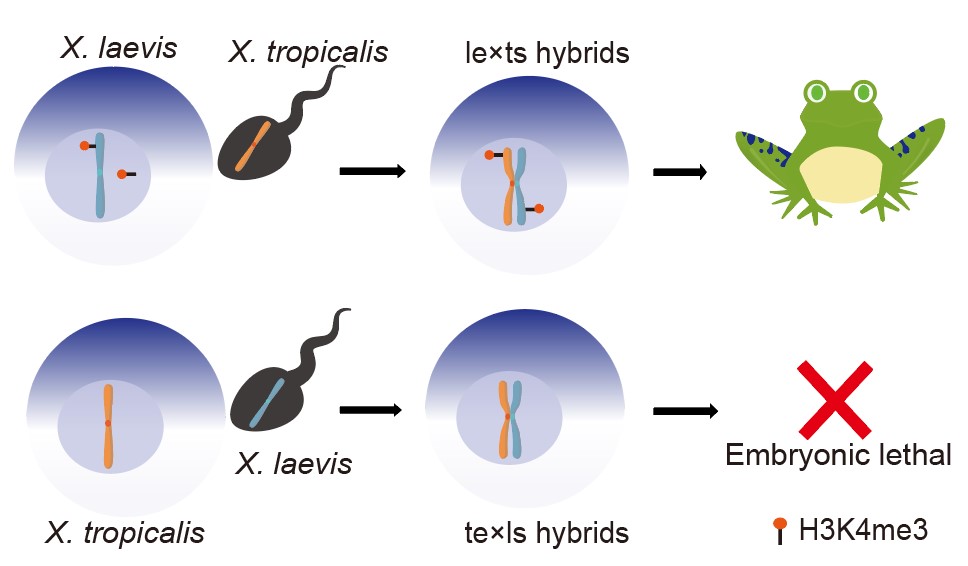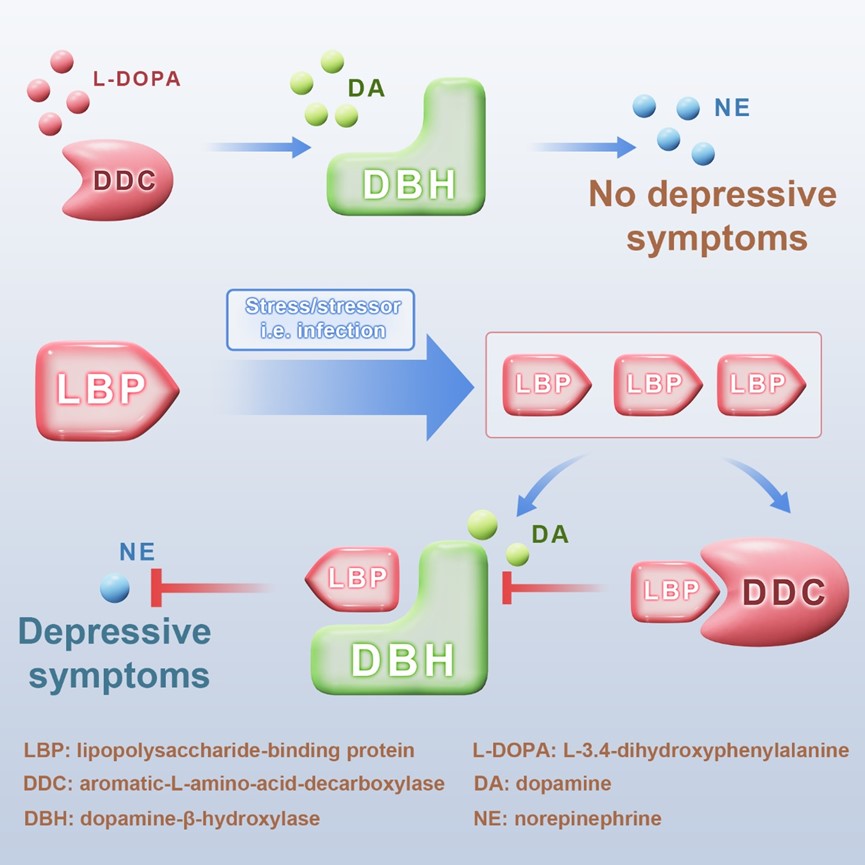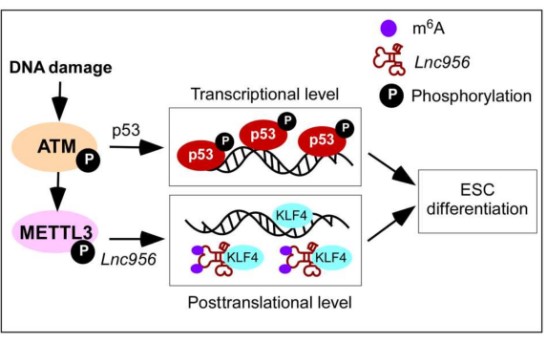Mitogenome evidence disclosed Ice Age Human migrations from northern coastal China to the Americas and Japan
LERAN MOREIt is now widely recognized that the Native Americans, also called Indigenous Americans, reached the Americas from Asia as early as the Last Glacial Maximum (LGM; 26500-19000 years ago). Previous studies suggested the ancestors of Native Americans primarily came from Siberia. Now researchers led by Prof. KONG Qing-Peng from Kunming Institute of Zoology disclosed an additional ancestral source of Native Americans in northern coastal China.
According to previous evidence from matrilineal inherited mitochondrial DNA (mtDNA), the majority of the Native Americans’ female founder types, e.g., A2, B2, D1, C4c, etc., could trace their ancestries to Siberia. However, the origin of one of their founder types, namely D4h3a, was still illusive. Until now, only three individuals belonging to its sister lineage (its closet genetic type), D4h3b, had been reported in eastern China and Thailand, implying a genetic link between East Asia and the Americas. This raised a possibility that the maternal ancestral sources for early Native Americans in Asia were more variegated than hypothesized. Therefore, a comprehensive investigation on D4h3 and D4h (both ancestral to D4h3a and D4h3b) may help to shed more light on the origin histories of Native Americans.
In this study, the researchers collected mtDNA data of 100,000 Eurasian samples, and finally obtained 216 whole mtDNA genomes (mitogenomes) of D4h (including the 106 newly obtained). They also collected 39 D4h mtDNA data from more than 15,000 ancient samples from the literature and public dataset.
By integrating ancient and contemporary mitogenomes, the researchers found that both ancient and contemporary D4h samples distributed in northern region of China. Meanwhile, the relative basal branches can be found in the northern coastal regions. In contrast, D4h samples were sporadically observed in Siberia. This evidence indicated that ancestral source of D4h3a could be traced back to northern coastal China, which is different from the other female founder lineages of Native Americans.
Two population radiation events had been identified. The first occurred during the LGM, when D4h3 (the ancestor of D4h3a and D4h3b) originated, followed by the dispersal of D4h3a into the Americas by the end of this period. The second radiation occurred during the subsequent deglaciation or melting period, between 19,000 and 11,500 years ago. Within these two periods, the regions around the Huanghai, Bohai, and east China seas were connected by land, which probably allowed these radiations and migrations to occur.
Interestingly, during the deglaciation period, the radiations of D4h in northern coastal China also contributed to the gene pool of Japanese, especially the indigenous peoples including Jomons and Ainus. This helps to explain the previously observed similarity in Paleolithic technology among these regions, such as stemmed points which distributed around the Pacific Rim from Japan to South America.
This study also shade important light on the dispersal route of early Native Americans into the Americas. Since D4h radiated from northern coastal China, which is geographically close to Pacific coastal Rim, the researchers speculated that D4h would have dispersed along the eastern Pacific coast. This echoes well with the dispersal D4h3a along the Pacific coastal path when the ice-free corridor was closed.
In summary, by integrating ancient and contemporary mitogenomes of D4h, the researchers traced the ancestral source of Native American specific female lineage D4h3a to northern coastal China. This ancestral source in northern coastal China contributed to the gene pools of not only the Native Americans but also the Japanese.
This study, entitled “Mitogenome evidence shows two radiation events and dispersals of matrilineal ancestry from northern coastal China to the Americas and Japan” was published in Cell Reports. Prof. KONG Qing-Peng is the corresponding author. LI Yu-Chun is the first author.
This project was supported by the National Natural Sciences Foundation of China, National Key R&D Program of China, Strategic Priority Research Program, etc.
Two radiation events of D4h in LGM (26500-19000 years ago) and deglaciation period (19000-11000 years ago) (Image by Prof. Kong’s group of KIZ)
Contact: KONG Qing-Peng, Principal Investigator
Kunming Institute of Zoology, Chinese Academy of Sciences,
Kunming, Yunnan 650201, China
Tel: 0871-68125403
E-mail: kongqp@mail.kiz.ac.cn


